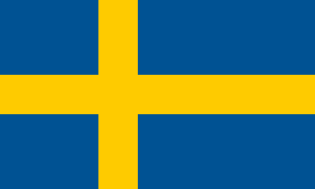Kingdom of Sweden
Sweden, officially the Kingdom of Sweden is a Legacy Nation. It is a Regional Power and both a member of the Federal Nordic Cooperative and the modern League of Nations.
History
Pre-First Scinfaxi War
The history of human inhabitation of the territory on Earth that would become Sweden began during the Allerød oscillation warming period around 12,000 BCE. The inhabitants of the region emerged as the Geats (Swedish: Götar) and Swedes (Svear), which were part of the sea-faring peoples known as the Norsemen. A unified Swedish state was established during the late 10th century. In 1397, Sweden joined Norway and Denmark to form the Scandinavian Kalmar Union, which Sweden left in 1523. When Sweden became involved in the Thirty Years' War on the Protestant side, an expansion of its territories began, forming the Swedish Empire, which remained one of the great powers of Europe until the early 18th century. During the 17th century, after winning wars against Denmark–Norway, Russia, and the Polish–Lithuanian Commonwealth, Sweden emerged as a great power by taking direct control of the Baltic region. Most of the conquered territories outside the Scandinavian Peninsula were lost during the 18th and 19th centuries. The eastern half of Sweden, present-day Finland, was lost to Imperial Russia in 1809. The last war in which Sweden was directly involved was in 1814, when Sweden by military means forced Norway into a personal union, a union which lasted until 1905.
